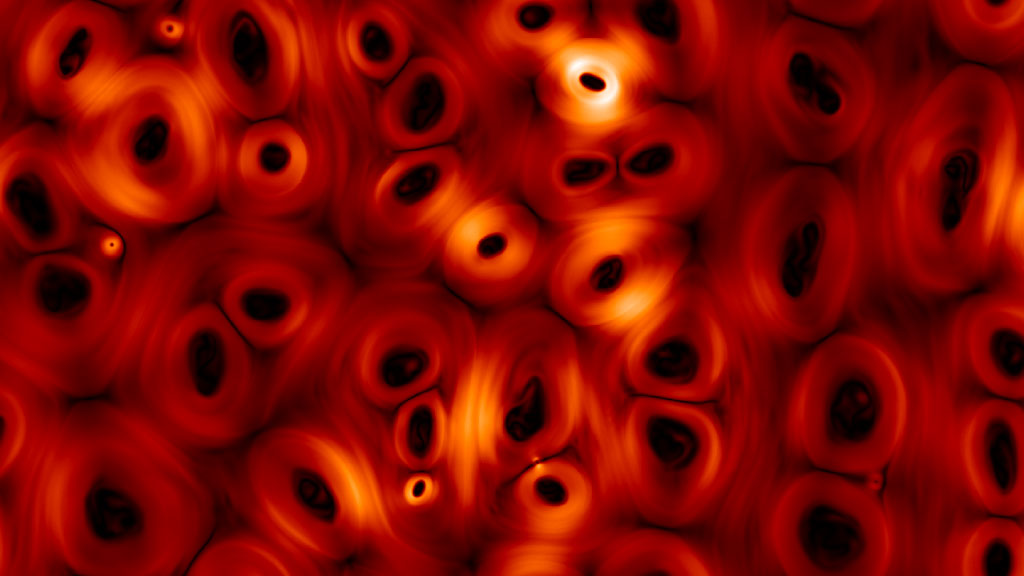Voyager Satellites Find Magnetic Bubbles at Edge of Solar System
The sun's magnetic field spins opposite directions on the north and south poles. These oppositely pointing magnetic fields are separated by a layer of current called the heliospheric current sheet. Due to the tilt of the magnetic axis in relation to the axis of rotation of the Sun, the heliospheric current sheet flaps like a flag in the wind. The flapping current sheet separates regions of oppositely pointing magnetic field, called sectors. As the solar wind speed decreases past the termination shock, the sectors squeeze together, bringing regions of opposite magnetic field closer to each other. The Voyager spacecraft have now found that when the separation of sectors becomes very small, the sectored magnetic field breaks up into a sea of nested "magnetic bubbles" in a phenomenon called magnetic reconnection. The region of nested bubbles is carried by the solar wind to the north and south filling out the entire front region of the heliopause and the sector region in the heliosheath.
This discovery has prompted a complete revision of what the heliosheath region looks like. The smooth, streamlined look is gone, replaced with a bubbly, frothy outer layer.
More animations about the Voyager magnetic bubbles discovery are available.
Computer simulation of the magnetic reconnection in the heliosheath.
Credit: NASA/J.F. Drake, M. Swisdak, M. Opher

Artist's interpretation depicting the new view of the heliosphere. The heliosheath is filled with "magnetic bubbles" (shown in the red pattern) that fill out the region ahead of the heliopause. In this new view, the heliopause is not a continuous shield that separates the solar domain from the interstellar medium, but a porous membrane with fingers and indentations.
Credit: NASA/Goddard Space Flight Center/ CI Lab

Artist's interpretation of the "standard" old view of the heliosphere: the magnetic field lines in the heliosheath connect back to the sun everywhere (some field lines are shown in red and blue). In this view, scientists expected the heliopause, the boundary that separates where the solar wind dominates from where the interstellar wind dominates, to be smooth and the associated smooth magnetic field to shield us from the interstellar medium and galactic cosmic rays.
Credit: NASA/Goddard Space Flight Center/ CI Lab
For More Information
Credits
Please give credit for this item to:
NASA/Goddard Space Flight Center/Conceptual Image Lab
-
Animators
- Walt Feimer (HTSI)
- Michael Lentz (UMBC)
- Chris Smith (HTSI)
- Tom Bridgman (Global Science and Technology, Inc.)
-
Video editor
- Scott Wiessinger (USRA)
-
Narrator
- Scott Wiessinger (USRA)
-
Producer
- Scott Wiessinger (USRA)
-
Scientist
- Merav Opher (Boston University)
-
Writers
- Scott Wiessinger (USRA)
- Karen Fox (ADNET Systems, Inc.)
Release date
This page was originally published on Thursday, June 9, 2011.
This page was last updated on Wednesday, May 3, 2023 at 1:53 PM EDT.
Series
This visualization can be found in the following series:Tapes
This visualization originally appeared on the following tapes:-
Voyager Magnetic Bubbles
(ID: 2011050)
Thursday, June 9, 2011 at 4:00AM
Produced by - Robert Crippen (NASA)
